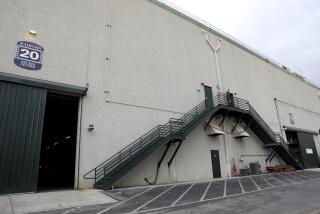Trial Opens in Disney Ride Injury Suit by Surgeon
- Share via
A shoulder harness that allegedly failed to close properly on a ride at the California Adventure theme park caused whiplash and a neurological disorder to a Milwaukee surgeon, forcing him to stop his practice because of pain, his attorney said Tuesday.
The allegations came during opening statements in a negligence lawsuit against the Walt Disney Co. in Superior Court in Santa Ana before Judge David A. Thompson. It was brought by Dr. David Heber, who says he was injured on the California Screamin’ roller coaster in August 2001.
Heber’s attorney, Mark Feldman, alleges an equipment failure caused by poor maintenance, lack of lubrication to the restraint and ride operators’ failing to notice Heber’s unlocked restraint, in part because of time pressure to keep the ride going.
At the time, according to Heber, he had a successful practice, completing an average of 450 surgeries a year. But after the ride, his attorney said, Heber complained of pain, perspiration and a burning sensation in his neck -- diagnosed as complex regional pain syndrome.
According to Feldman, the restraint locked in the up position at eye level. Heber and his wife yelled to ride operators, Feldman said, but their calls went unheeded. The two-minute ride “violently shook” Heber, who “hung on for dear life,” Feldman said.
Disney attorney R. Dewitt Kirwan disputed the plaintiff’s account, saying the ride is safe. Instead of violently jarring passengers, the roller coaster is a “mild, family ride,” not like turbulent, high-speed rides at other parks, he said.
“This ride is no different than riding around in a sports car,” Kirwan said. It doesn’t have “the kind of motion to cause these kinds of lifelong injuries.”
The surgeon’s ailments were more likely caused by a history of neck and hand injuries and a car crash in 1998, Kirwan said. In the crash, he said, Heber suffered severe trauma when he was knocked unconscious and had a mild brain injury. In addition, Heber has a congenital disc disease in the neck, Kirwan said. Feldman denied that such conditions were the cause of his client’s injuries.
As for allegations of faulty maintenance, Kirwan said, no lubrication was done on the restraint’s ratchet system because it was self-lubricating.
Feldman told jurors that during depositions, a Disney project engineer said Disney had decided not to lubricate the restraint system even though the manufacturer’s guidelines and the park’s own maintenance policies required it. But park records indicated that the work was being done even when it wasn’t, he said.
Kirwan noted that after Heber got off the ride, he did not complain to ride operators or guest services. Heber also did not file any claim with the park when his condition did not improve, Kirwan said.
Since February 2001, when it opened, the ride has had an estimated 12 million riders. “Not a single person has complained that the restraint locked in the up position,” Kirwan said.
More to Read
Sign up for Essential California
The most important California stories and recommendations in your inbox every morning.
You may occasionally receive promotional content from the Los Angeles Times.










